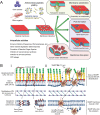Considerations and Caveats in Combating ESKAPE Pathogens against Nosocomial Infections
- PMID: 31921562
- PMCID: PMC6947519
- DOI: 10.1002/advs.201901872
Considerations and Caveats in Combating ESKAPE Pathogens against Nosocomial Infections
Erratum in
-
Erratum: Considerations and Caveats in Combating ESKAPE Pathogens against Nosocomial Infections.Adv Sci (Weinh). 2020 Apr 22;7(8):202000779. doi: 10.1002/advs.202000779. eCollection 2020 Apr. Adv Sci (Weinh). 2020. PMID: 33224716 Free PMC article.
Abstract
ESKAPE pathogens (Enterococcus faecium, Staphylococcus aureus, Klebsiella pneumoniae, Acinetobacter baumannii, Pseudomonas aeruginosa, and Enterobacter species) are among the most common opportunistic pathogens in nosocomial infections. ESKAPE pathogens distinguish themselves from normal ones by developing a high level of antibiotic resistance that involves multiple mechanisms. Contemporary therapeutic strategies which are potential options in combating ESKAPE bacteria need further investigation. Herein, a broad overview of the antimicrobial research on ESKAPE pathogens over the past five years is provided with prospective clinical applications.
Keywords: antimicrobial peptides; antiresistance; antivirulence; bacteriophages; nanodelivery strategies.
© 2019 The Authors. Published by WILEY‐VCH Verlag GmbH & Co. KGaA, Weinheim.
Conflict of interest statement
The authors declare no conflict of interest.
Figures








References
Publication types
LinkOut - more resources
Full Text Sources
Miscellaneous
